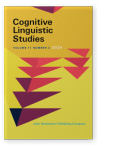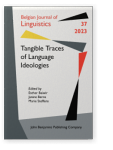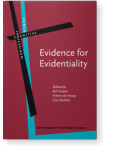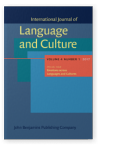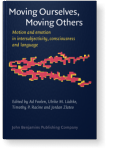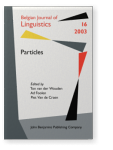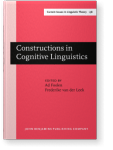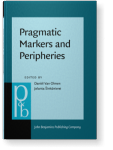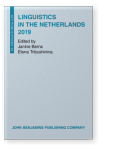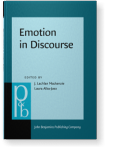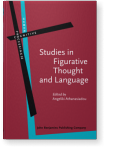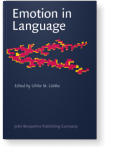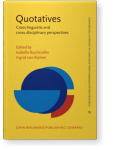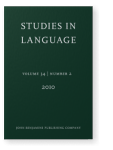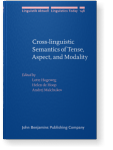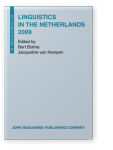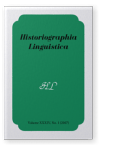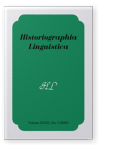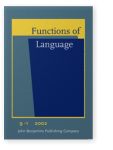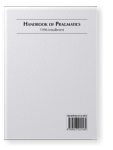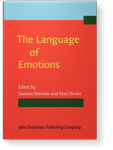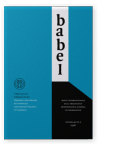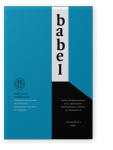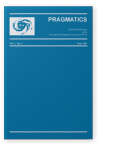Ad Foolen
List of John Benjamins publications for which Ad Foolen plays a role.
Journal
Yearbook
Evidence for Evidentiality
Edited by Ad Foolen, Helen de Hoop and Gijs Mulder
[Human Cognitive Processing, 61] 2018. vii, 313 pp.
Subjects Cognition and language | Cognitive linguistics | Discourse studies | Pragmatics | Semantics | Theoretical linguistics
Emotions across Languages and Cultures
Edited by Angeliki Athanasiadou and Ad Foolen
Special issue of International Journal of Language and Culture 4:1 (2017) v, 119 pp.
Subjects Anthropological Linguistics | Applied linguistics | Cognition and language | Cognitive psychology | Communication Studies | Pragmatics
Moving Ourselves, Moving Others: Motion and emotion in intersubjectivity, consciousness and language
Edited by Ad Foolen, Ulrike M. Lüdtke, Timothy P. Racine and Jordan Zlatev
[Consciousness & Emotion Book Series, 6] 2012. viii, 492 pp.
Subjects Cognition and language | Consciousness research | Evolution of language
Particles
Edited by Ton van der Wouden, Ad Foolen and Piet Van de Craen
[Belgian Journal of Linguistics, 16] 2002. iv, 208 pp.
Subjects Pragmatics | Semantics | Syntax
Constructions in Cognitive Linguistics: Selected papers from the Fifth International Cognitive Linguistics Conference, Amsterdam, 1997
Edited by Ad Foolen and Frederike van der Leek
[Current Issues in Linguistic Theory, 178] 2000. xvi, 338 pp.
Subjects Cognition and language | Syntax | Theoretical linguistics
2021 Chapter 2. Dutch pragmatic markers in the left periphery Pragmatic Markers and Peripheries, Van Olmen, Daniël and Jolanta Šinkūnienė (eds.), pp. 49–74 | Chapter
This chapter explores the left periphery of Dutch utterances. Four positions hosting pragmatic markers (PMs) are distinguished: the first sentence position (P1), a position following P1 and two positions respectively preceding and following a left dislocated constituent. We hypothesize that there… read more
2019 TiN days and ICL weeks Linguistics in the Netherlands 2019, Berns, Janine and Elena Tribushinina (eds.), pp. 20–26 | Article
2019 Chapter 6. The value of left and right Emotion in Discourse, Mackenzie, J. Lachlan and Laura Alba-Juez (eds.), pp. 139–158 | Chapter
This chapter focuses on the emotive value (‘axiology’) of words for left and right in different languages. As a general picture, an asymmetry emerges, with a positive value for right and a negative one for left. The chapter further explores whether this asymmetry is reflected in other domains like… read more
2018 Introduction: Evidentiality: How do you know? Evidence for Evidentiality, Foolen, Ad, Helen de Hoop and Gijs Mulder (eds.), pp. 1–16 | Introduction
2018 Chapter 3.
I think and I believe: Evidential expressions in Dutch Evidence for Evidentiality, Foolen, Ad, Helen de Hoop and Gijs Mulder (eds.), pp. 77–97 | Chapter
This chapter focuses on the evidential use of Dutch denken ‘think’ and geloven ‘believe’ with a first person pronoun. On the basis of Twitter data we conclude that some constructions containing these verbs show features of grammaticalization and that the evidentiality at stake can be labelled as… read more
2017 Chapter 7. The hand in figurative thought and language Studies in Figurative Thought and Language, Athanasiadou, Angeliki (ed.), pp. 179–198 | Chapter
The hand is a rich source of figurative language. The paper claims that this richness has to do with the central role of the hand in human active involvement in the world. This claim fits recent developments in phenomenological philosophy, according to which cognition is based on… read more
2017 Introduction special issue ‘Emotions across languages and cultures’ Emotions across Languages and Cultures, Athanasiadou, Angeliki and Ad Foolen (eds.), pp. 1–5 | Introduction
2015 Word valence and its effects Emotion in Language: Theory – research – application, Lüdtke, Ulrike M. (ed.), pp. 241–256 | Article
Cognitive science underwent an ‘emotional turn’ in recent years. Besides the
rational part of the brain, the ‘other half of the human mind’ (see Parisi 2011) is
now taken into consideration as well. Linguistics, with its strong orientation and
links to cognitive science, cannot neglect this… read more
2012 Dutch quotative van: Past and present Quotatives: Cross-linguistic and cross-disciplinary perspectives, Buchstaller, Isabelle and Ingrid van Alphen (eds.), pp. 259–280 | Article
The quotative use of the Dutch preposition van ‘of’ can be considered as the Dutch counterpart of English like, German so and similar items in other languages, the use of which has increased significantly in many languages of the world in the last four decades. Stylistically, quotative van occurs… read more
2012 The relevance of emotion for language and linguistics Moving Ourselves, Moving Others: Motion and emotion in intersubjectivity, consciousness and language, Foolen, Ad, Ulrike M. Lüdtke, Timothy P. Racine and Jordan Zlatev (eds.), pp. 349–368 | Article
The relevance of emotion for language and linguistics is considered from three perspectives: (a) the conceptualization of emotions, (b) the expression of emotions and (c) the grounding of language. As to the conceptualization perspective, research on the emotional lexicon is discussed. Not only… read more
2009 Conflicting constraints on the interpretation of modal auxiliaries Cross-linguistic Semantics of Tense, Aspect, and Modality, Hogeweg, Lotte, Helen de Hoop and Andrej L. Malchukov (eds.), pp. 303–316 | Article
The Dutch modal auxiliaries kunnen ‘can’ and moeten ‘must’ can be interpreted in different ways: ‘participant-internal, ‘participant-external’, and epistemic. For each of the verbs, we assume a basic, default interpretation: ‘participant-internal’ for kunnen, ‘participant-external’ for moeten. In… read more
2009 The placement of focus particles in Dutch Linguistics in the Netherlands 2009, Botma, Bert and Jacqueline van Kampen (eds.), pp. 51–63 | Article
2005 Publications Received / Ouvrages Reçus Eingegangene Schriften Historiographia Linguistica 32:3, pp. 425–441 | Publications received
2002 Frederick J. Newmeyer’s Language Form and Language Function Functions of Language 9:1, pp. 87–102 | Review article
2002 Introduction Particles, Wouden, Ton van der, Ad Foolen and Piet Van de Craen (eds.), pp. 1–6 | Miscellaneous
1997 Pragmatic particles Handbook of Pragmatics: 1996 Installment, Verschueren, Jef, Jan-Ola Östman, Jan Blommaert † and Chris Bulcaen (eds.), pp. 1–24 | Article
1997 The expressive function of language: Towards a cognitive semantic approach The Language of Emotions: Conceptualization, expression, and theoretical foundation, Niemeier, Susanne and René Dirven † (eds.), pp. 15–32 | Article
1996 Karl-Ernst Sommerfeldt (Hrsg.) Sprache im Alltag: Beobachtungen zur Sprachkultur Babel 42:2, pp. 115–117 | Review
1991 Metalinguistic negation and pragmatic ambiguity: Some comments on a proposal by Laurence Horn Pragmatics 1:2, pp. 217–237 | Article
